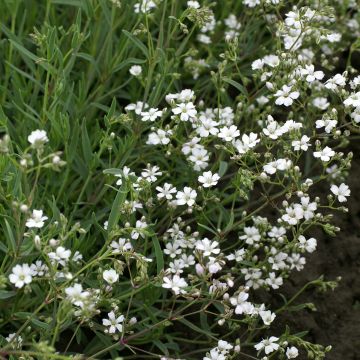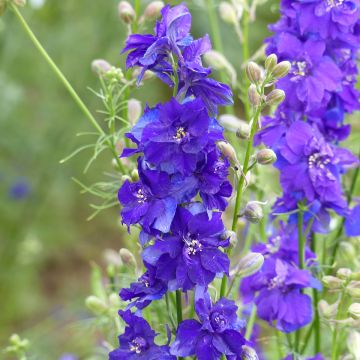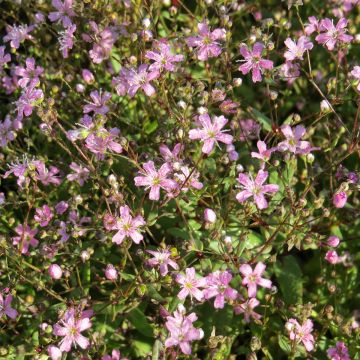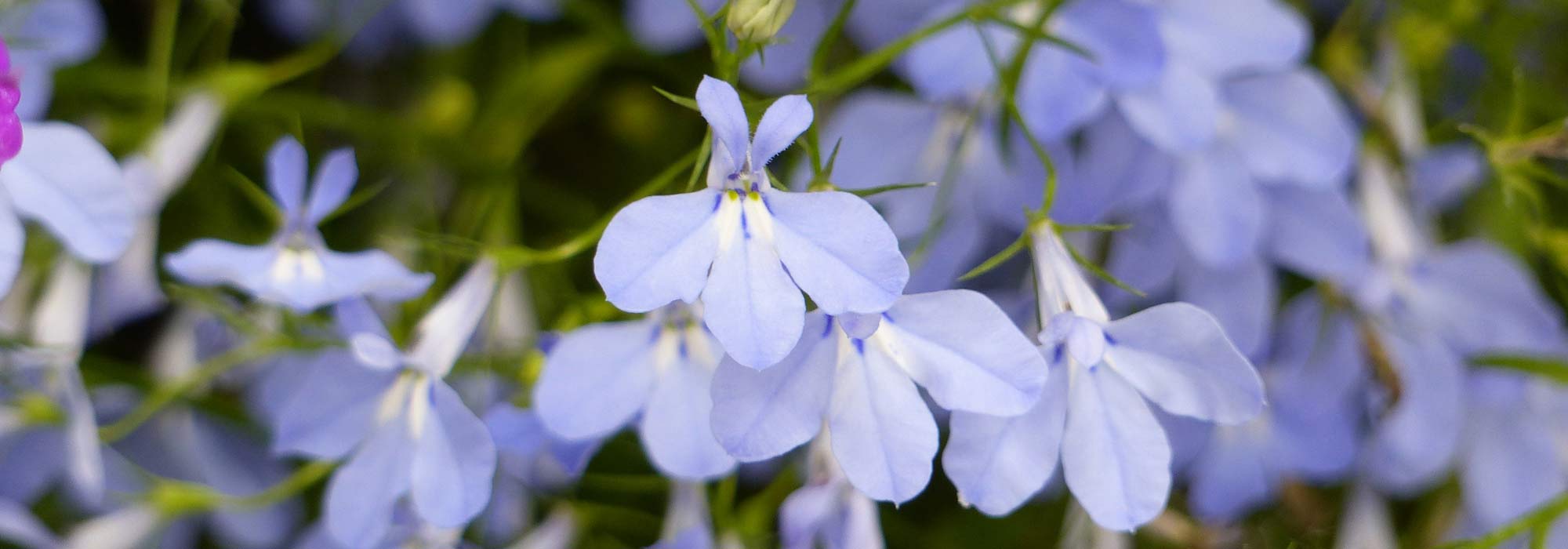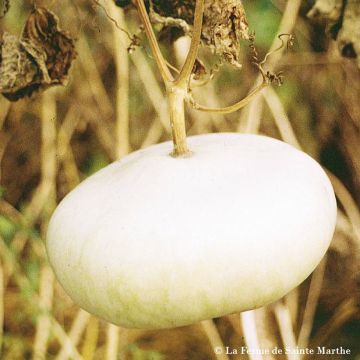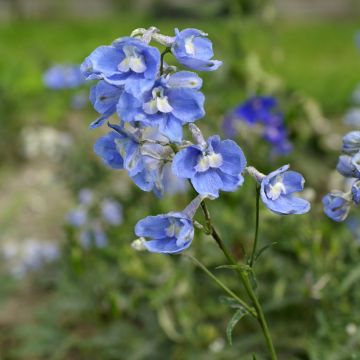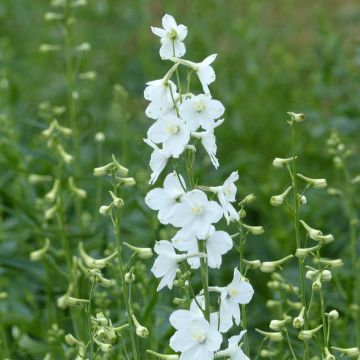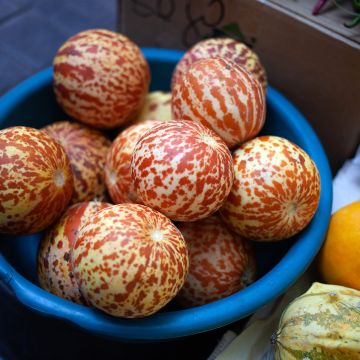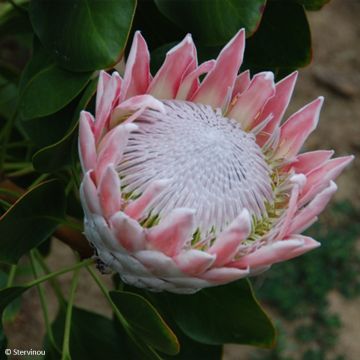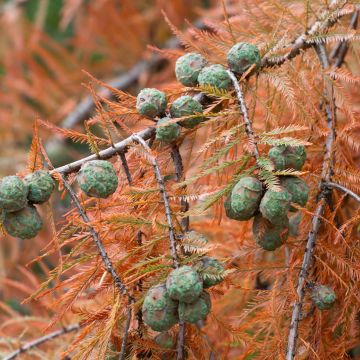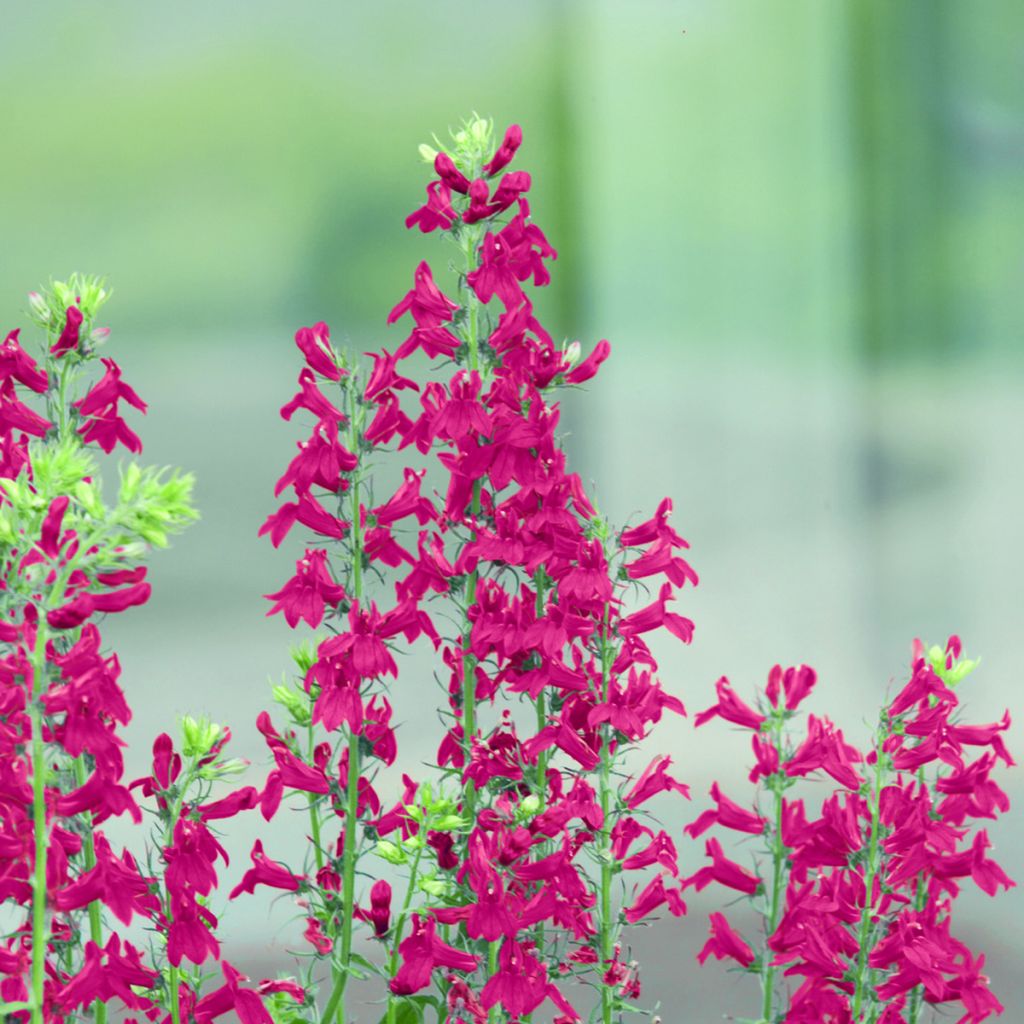

Lobelia speciosa Fan Scarlet (coated seeds)
Lobelia speciosa Fan Scarlet (coated seeds)
Lobelia x speciosa Fan Scarlet
Garden Lobelia, Cardinal Flower
Special offer!
Receive a €20 voucher for any order over €90 (excluding delivery costs, credit notes, and plastic-free options)!
1- Add your favorite plants to your cart.
2- Once you have reached €90, confirm your order (you can even choose the delivery date!).
3- As soon as your order is shipped, you will receive an email containing your voucher code, valid for 3 months (90 days).
Your voucher is unique and can only be used once, for any order with a minimum value of €20, excluding delivery costs.
Can be combined with other current offers, non-divisible and non-refundable.
Why not try an alternative variety in stock?
View all →This plant carries a 6 months recovery warranty
More information
We guarantee the quality of our plants for a full growing cycle, and will replace at our expense any plant that fails to recover under normal climatic and planting conditions.
Would this plant suit my garden?
Set up your Plantfit profile →
Description
Lobelia speciosa ‘Fan Scarlet’ is a remarkable perennial plant for moist to wet soil, featuring bronze-purple foliage adorned with long spikes of scarlet flowers from summer until the first frosts. This particularly decorative, robust and floriferous variety from the ‘Fan’ series adapts perfectly to sunny or lightly shaded areas of the garden, especially along pond edges, woodland margins, or in fresh container displays on a terrace.
Lobelia speciosa encompasses a group of hybrids resulting from cross-breeding between several North American species, including Lobelia cardinalis, Lobelia fulgens, and Lobelia siphilitica. These species grow naturally in damp areas, along streams, or in floodplain meadows.
This cross-breeding has given rise to several cultivars, including the ‘Fan’ series, developed by Kieft Seeds, a Dutch company specialising in perennial selection for floriculture. The ‘Fan Scarlet’ cultivar, also marketed as 'Fan Scharlach', is characterised by its scarlet-red flowering, coloured foliage, branched growth, and excellent garden performance. Its hardiness ranges from -5 to -10 °C depending on the soil type.
Lobelia speciosa ‘Fan Scarlet’ forms an upright, dense, and well-structured clump. It reaches 60-70 cm in height and 25-30 cm in spread. The plant first forms a rosette of basal lanceolate, toothed leaves, then develops sturdy, erect, slightly hairy stems. The alternate leaves are longer at the base and shorten as they ascend towards the inflorescences. Their colour evolves from purple to bronze-purple. Flowering extends from July to September-October. At the stem tips, spikes of tubular flowers appear, arranged spirally along the stems. Each 2-3 cm long flower opens into two lips curved outward. Their colour is an extremely vivid red. This flowering is highly attractive to pollinating insects. The above-ground growth is deciduous: it dies back in autumn and regrows from the crown the following spring. Although typically grown as a perennial, this Lobelia can sometimes behave as a biennial or short-lived perennial, but it self-sows moderately if conditions are favourable.
Lobelia speciosa ‘Fan Scarlet’ is an excellent plant for enlivening borders in moist ground and damp areas of the garden. It is equally suited to summer container compositions and urban landscaping schemes. Planted along pond edges or at woodland margins, it draws the eye. Pair it, for example, with Rodgersia podophylla, whose lush foliage creates a textural contrast. It also pairs wonderfully with Persicaria amplexicaulis ‘Blackfield’, with its carmine-red spikes, or with a fern such as Dryopteris erythrosora for a touch of delicacy and lightness in fresh woodland settings. Farfugium japonicum, with its broad, glossy, and highly decorative foliage, also makes an excellent companion for Lobelia speciosa ‘Fan Scarlet’.
Coated seeds are seeds surrounded by a thin protective layer, composed of clay, nutrients, or a natural binder. This process facilitates their handling, particularly for very small seeds like those of lobelia, by making them larger and more regular. The coating also improves sowing precision, promotes more uniform germination, and may sometimes contain elements beneficial to sprouting.
Flowering
Foliage
Plant habit
Botanical data
Lobelia
x speciosa
Fan Scarlet
Campanulaceae
Garden Lobelia, Cardinal Flower
Lobelia x speciosa Fan Scharlach
Cultivar or hybrid
Planting and care
Sow Lobelia Fan Scarlet from January to March for container flowering from July, or from April to May for outdoor cultivation. Sow the seeds on the surface, without covering them, as they need light to germinate. Maintain a constant temperature of 21°C and high humidity to encourage germination, which usually occurs within 10 to 14 days.
Once the seedlings are well developed, transplant them individually into pots 10 to 15 cm in diameter.
Cultivation:
Lobelia speciosa ‘Fan Scarlet’ prefers a humus-rich, well-drained soil, with a pH between 6.0 and 7.0. It enjoys sunny to partially shaded exposures. Plant it outdoors after the last frosts, spacing the young plants 30 to 40 cm apart. Water regularly to keep the soil moist, especially during dry periods. Apply a balanced fertiliser every two weeks to support growth and flowering.
In winter, protect the crown with a thick mulch to prevent frost damage, especially in regions with harsh winters.
Sowing period
Intended location
Planting & care advice
This item has not been reviewed yet - be the first to leave a review about it.
Similar products
Haven't found what you were looking for?
Hardiness is the lowest winter temperature a plant can endure without suffering serious damage or even dying. However, hardiness is affected by location (a sheltered area, such as a patio), protection (winter cover) and soil type (hardiness is improved by well-drained soil).

Photo Sharing Terms & Conditions
In order to encourage gardeners to interact and share their experiences, Promesse de fleurs offers various media enabling content to be uploaded onto its Site - in particular via the ‘Photo sharing’ module.
The User agrees to refrain from:
- Posting any content that is illegal, prejudicial, insulting, racist, inciteful to hatred, revisionist, contrary to public decency, that infringes on privacy or on the privacy rights of third parties, in particular the publicity rights of persons and goods, intellectual property rights, or the right to privacy.
- Submitting content on behalf of a third party;
- Impersonate the identity of a third party and/or publish any personal information about a third party;
In general, the User undertakes to refrain from any unethical behaviour.
All Content (in particular text, comments, files, images, photos, videos, creative works, etc.), which may be subject to property or intellectual property rights, image or other private rights, shall remain the property of the User, subject to the limited rights granted by the terms of the licence granted by Promesse de fleurs as stated below. Users are at liberty to publish or not to publish such Content on the Site, notably via the ‘Photo Sharing’ facility, and accept that this Content shall be made public and freely accessible, notably on the Internet.
Users further acknowledge, undertake to have ,and guarantee that they hold all necessary rights and permissions to publish such material on the Site, in particular with regard to the legislation in force pertaining to any privacy, property, intellectual property, image, or contractual rights, or rights of any other nature. By publishing such Content on the Site, Users acknowledge accepting full liability as publishers of the Content within the meaning of the law, and grant Promesse de fleurs, free of charge, an inclusive, worldwide licence for the said Content for the entire duration of its publication, including all reproduction, representation, up/downloading, displaying, performing, transmission, and storage rights.
Users also grant permission for their name to be linked to the Content and accept that this link may not always be made available.
By engaging in posting material, Users consent to their Content becoming automatically accessible on the Internet, in particular on other sites and/or blogs and/or web pages of the Promesse de fleurs site, including in particular social pages and the Promesse de fleurs catalogue.
Users may secure the removal of entrusted content free of charge by issuing a simple request via our contact form.
The flowering period indicated on our website applies to countries and regions located in USDA zone 8 (France, the United Kingdom, Ireland, the Netherlands, etc.)
It will vary according to where you live:
- In zones 9 to 10 (Italy, Spain, Greece, etc.), flowering will occur about 2 to 4 weeks earlier.
- In zones 6 to 7 (Germany, Poland, Slovenia, and lower mountainous regions), flowering will be delayed by 2 to 3 weeks.
- In zone 5 (Central Europe, Scandinavia), blooming will be delayed by 3 to 5 weeks.
In temperate climates, pruning of spring-flowering shrubs (forsythia, spireas, etc.) should be done just after flowering.
Pruning of summer-flowering shrubs (Indian Lilac, Perovskia, etc.) can be done in winter or spring.
In cold regions as well as with frost-sensitive plants, avoid pruning too early when severe frosts may still occur.
The planting period indicated on our website applies to countries and regions located in USDA zone 8 (France, United Kingdom, Ireland, Netherlands).
It will vary according to where you live:
- In Mediterranean zones (Marseille, Madrid, Milan, etc.), autumn and winter are the best planting periods.
- In continental zones (Strasbourg, Munich, Vienna, etc.), delay planting by 2 to 3 weeks in spring and bring it forward by 2 to 4 weeks in autumn.
- In mountainous regions (the Alps, Pyrenees, Carpathians, etc.), it is best to plant in late spring (May-June) or late summer (August-September).
The harvesting period indicated on our website applies to countries and regions in USDA zone 8 (France, England, Ireland, the Netherlands).
In colder areas (Scandinavia, Poland, Austria...) fruit and vegetable harvests are likely to be delayed by 3-4 weeks.
In warmer areas (Italy, Spain, Greece, etc.), harvesting will probably take place earlier, depending on weather conditions.
The sowing periods indicated on our website apply to countries and regions within USDA Zone 8 (France, UK, Ireland, Netherlands).
In colder areas (Scandinavia, Poland, Austria...), delay any outdoor sowing by 3-4 weeks, or sow under glass.
In warmer climes (Italy, Spain, Greece, etc.), bring outdoor sowing forward by a few weeks.
































